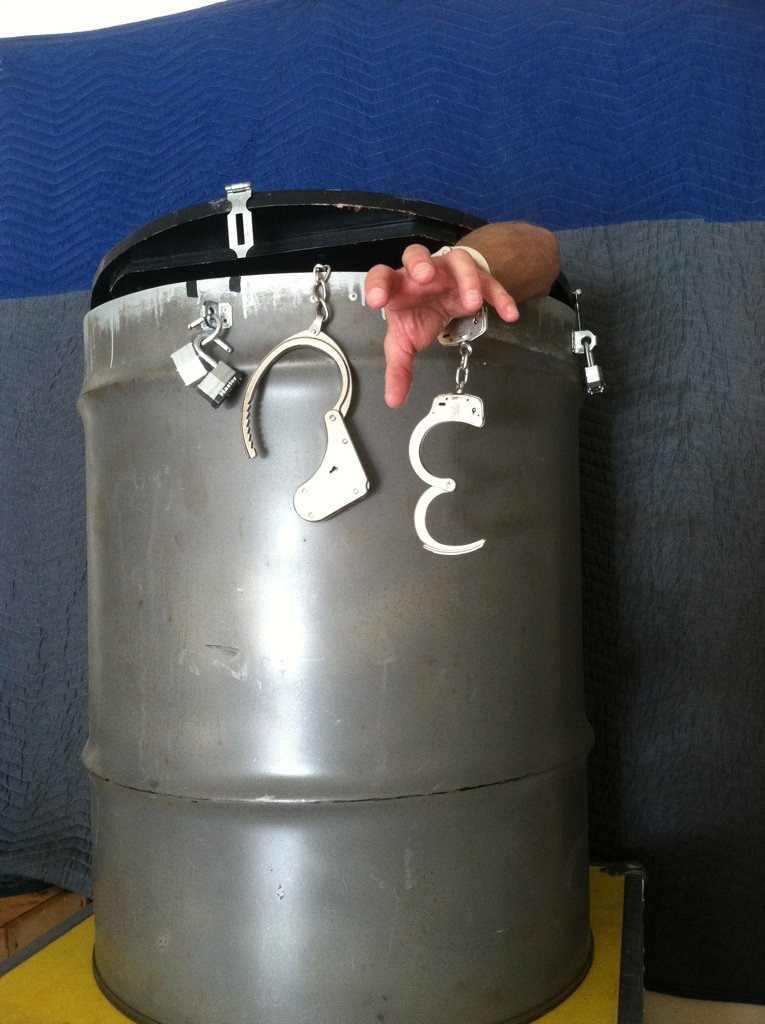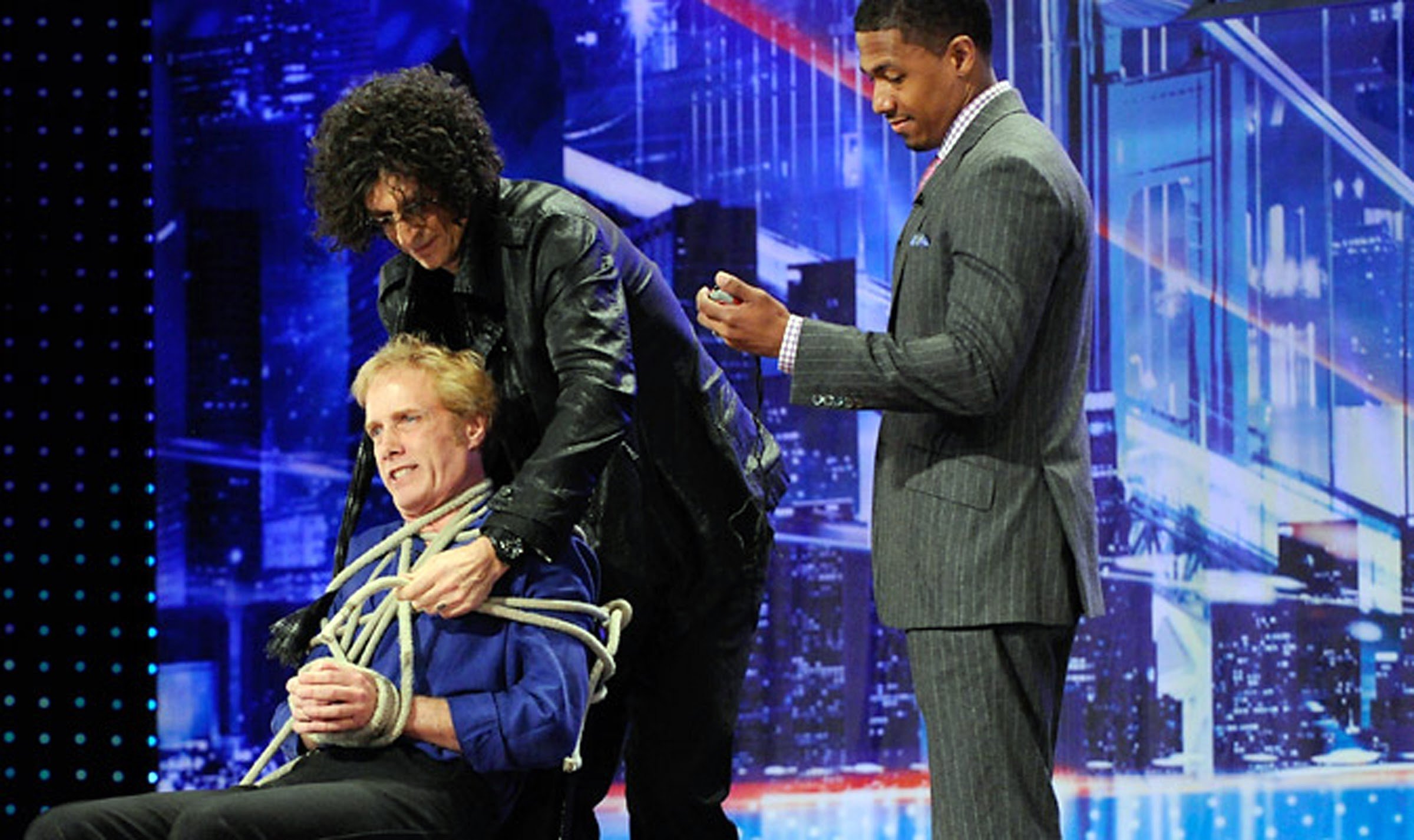HOUDINI’S BROTHER’S EPIC MAINE ESCAPE: Tramp Chair Uncovered in Hardeen’s Legendary Battle Against the Iron Beast
Theo "Dash" Hardeen: The Epic Escape from the Maine Tramp Chair
HARDEEN alongside the infamous Maine Tramp Chair
Michael Griffin here, As someone who spends a lot of time thinking about how to break free from the seemingly impossible, I've got a story for you that’s close to my heart—especially after my recent visit to Bangor, Maine. You see, while I was in town for my performances at the Bangor State Fair, where I managed to keep my $100,000 challenge intact, even in the midst of a blistering heat wave, I stumbled upon a piece of history that gave me chills in more ways than one. I’m talking about the infamous Maine Tramp Chair, and the man who conquered it: Theo "Dash" Hardeen, the lesser-known but equally incredible brother of Harry Houdini.
Now, most folks know Harry Houdini as the ultimate escape artist, but let me tell you, his younger brother, Hardeen, was no small potatoes. They called him the "Monarch of Manacles," and with good reason. He carved out a career that not only paralleled but sometimes even rivaled his famous sibling. And one of the most intense challenges Hardeen ever faced happened right here in Bangor, Maine, with that very Tramp Chair I just spent time with.
The Maine Tramp Chair: A Beast of a Challenge
First, let’s talk about this chair. The Maine Tramp Chair isn’t just any old piece of furniture—it’s an 800-pound iron behemoth, a relic from the Great Depression era designed to punish and remove the so-called “undesirables” from town. Think about that for a moment: a mobile jail on wheels, designed not just to restrain but to intimidate and physically hurt those who were already down on their luck. This wasn’t just about keeping someone locked up; it was about breaking their spirit.
As I stood before that chair, feeling its cold iron and staring at the very padlock that was used the night of Hardeen’s escape, I couldn’t help but imagine the scene. Hardeen, ever the showman, standing before a crowd in Bangor, staring down this monstrous contraption, knowing that one wrong move could mean the end of his career—or worse. But that’s the thing about escape artists, and it’s something I can relate to: we thrive on the edge of danger. The higher the stakes, the better we perform.





Hardeen’s Night of Glory
The challenge was set. The crowd was buzzing with excitement, probably with a mix of anticipation and doubt. Could Hardeen, the younger Houdini, really live up to his brother’s legend? The Tramp Chair loomed before him, a formidable opponent in every sense. It wasn’t just about slipping out of a pair of handcuffs or picking a lock; this was about defeating a symbol of oppression, an iron beast designed to crush the spirit of anyone unlucky enough to be strapped into it.
Hardeen, with the same kind of determination I’ve felt before every major escape, took a deep breath and approached the chair. The iron was cold, unyielding, but so was Hardeen’s resolve. His mind raced, analyzing every bolt, every joint, searching for that one weakness that would give him the edge he needed.
As he was locked into the chair, the crowd went silent. This wasn’t just a performance; it was a battle between man and machine, between freedom and restraint. For 11 long minutes, Hardeen worked against the clock, against the iron, and against the doubts of everyone watching. And then, in a display of sheer willpower and skill, he broke free. The crowd erupted, the cheers echoing through the night as Hardeen stood victorious, the iron beast defeated at his feet.
A Legacy of Courage
This escape didn’t just add to Hardeen’s legacy; it carved his name into the annals of escapology alongside his brother’s. But more than that, it was a reminder of the harsh realities of the time—the cruelty of devices like the Tramp Chair, and the resilience of those who fought against them, even if that fight was symbolic.
After spending time with the very chair that held Hardeen that night, I can tell you it’s not just a piece of history—it’s a testament to the power of the human spirit, to the idea that no matter how strong the chains, how impenetrable the cage, there’s always a way out if you’re willing to push yourself to the limit.
My Connection to the Challenge
Standing in front of that chair, I felt a kinship with Hardeen that I hadn’t expected. As someone who’s made a career out of escaping the inescapable, I know what it’s like to face down a challenge that feels impossible. Just this past week at the Bangor State Fair, I issued my own $100,000 challenge to anyone who could keep me prisoner. And let me tell you, the heat wave was no joke—it was like performing inside an oven. But that’s what makes these challenges worth it. The tougher the conditions, the sweeter the victory.
As I gripped the padlock that once held Hardeen, I couldn’t help but smile. There’s a certain satisfaction in knowing that, like Hardeen, I’ve faced down challenges that others might shy away from. Whether it’s the Tramp Chair or my own modern-day escapes, the thrill is the same: the thrill of proving that no matter how tough the challenge, I’m tougher.
Why Hardeen Deserves More Recognition
It’s easy to see why Harry Houdini gets most of the spotlight—he was the original, the one who blazed the trail. But after spending time with that Tramp Chair and learning more about Hardeen’s escape, I’m convinced that Theo “Dash” Hardeen deserves just as much recognition. He wasn’t just following in his brother’s footsteps; he was making his own path, one daring escape at a time.
Hardeen was the first to perform the straitjacket escape in full view of the audience, a feat that’s often mistakenly attributed to Harry. He was a trailblazer in his own right, constantly pushing the boundaries of what was possible. And the fact that he was willing to take on a challenge as daunting as the Tramp Chair tells you everything you need to know about his courage and skill.
The Maine Tramp Chair: A Piece of Dark History
But let’s not forget the darker side of this story. The Maine Tramp Chair, and others like it, were tools of oppression, used to control and punish those who were already suffering. They’re a stark reminder of a time when society turned a blind eye to the struggles of the poor and the homeless, opting instead to sweep them under the rug—or, in this case, roll them out of town.
Today, the Tramp Chair stands as a historical artifact, a reminder of both the cruelty of the past and the resilience of those who fought against it. It’s a sobering experience to stand before it, to touch the iron that once held men like Hardeen, and to know that these stories are part of our collective history.
Bringing It All Together
As I wrap up my time in Bangor and prepare for my next performance, I’m taking a piece of this experience with me. Hardeen’s escape from the Maine Tramp Chair isn’t just a footnote in history; it’s a story of triumph over adversity, of bravery in the face of overwhelming odds. It’s a reminder that no matter how strong the chains, the human spirit is stronger.
Michael Griffin Greatest Living Escape Artist On Stage
So, here’s to Theo “Dash” Hardeen, the unsung hero of escapology. And here’s to all of us who continue to push the boundaries, who refuse to be held down by the limits that others try to impose. Whether it’s a Tramp Chair in 1930s Bangor or a modern-day challenge on a sweltering fairground, the thrill of escape is timeless.
And remember, the next time you see a lock, a chain, or a cage, don’t just see it as a barrier—see it as a challenge. Because if Hardeen could break free from the Maine Tramp Chair, who’s to say what any of us are capable of?














